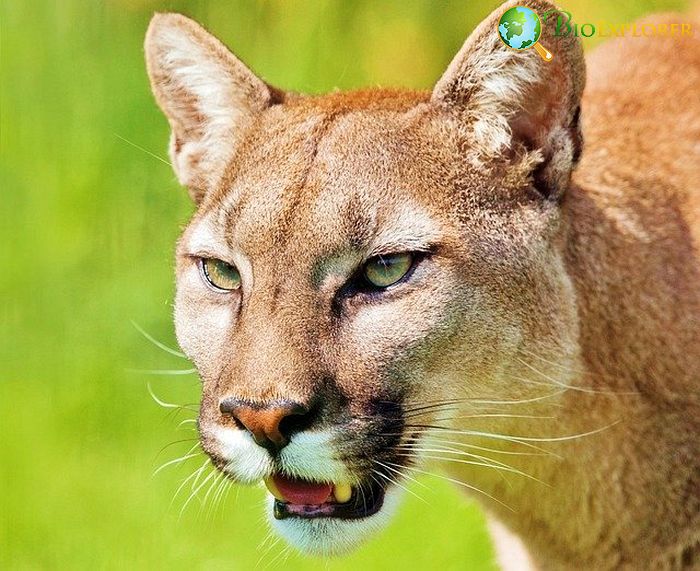
Foxes are classified under the genus Vulpes made up of about 12 existing species. These twelve species are referred to as true foxes distinguished from other members of the wolf-dog lineage.
This page will shed light on the different fox species, delving deeper into their diet. The topics covered will be the different types of foxes that have been scientifically described, what they eat, when they eat, how they hunt, and their roles in the animal food chain, among other critical information.
Table of Contents
- What Do Foxes Eat?
- What do Bengal/Indian Foxes eat?
- What Do Red Foxes eat?
- What do Blandford’s Foxes?
- What do Fennec Foxes eat?
- What do Swift Foxes eat?
- What do Kit Foxes eat?
- What do Tibetan Foxes eat?
- What do Cape Foxes eat?
- What do Arctic Foxes eat?
- When do Foxes eat?
- How often do Foxes eat?
- What eats Foxes?
- Do Foxes predate Humans?
- Do Foxes Eat Snakes?
- Do Red Foxes Eat Grasshoppers?
- Do Foxes Eat Birds?
- Do Foxes Eat Prairie Dogs?
- Do Foxes Eat Frogs?
- What role do Foxes play in the Animal Food Chain?
- Frequently Asked Questions
What Do Foxes Eat?
Foxes are generalist eaters whose diet entails rabbits, ground-dwelling birds such as chickens, bird eggs, rolly pollies, earthworms, chinchillas, frogs. Foxes also eat fruits and other vegetation. Here is the summary of different fox species and their respective diet.
| Bengal Fox | Vulpes bengalensis | Arthropods (beetles, crickets, locusts, grasshoppers), termites, rodents, lizards, and Ziziphus fruits. |
| Red Fox | Vulpes vulpes | Omnivores (meat and plant diet), rabbits, rodents (such as Groundhogs), birds, insects, and fruits. |
| Blandford’s Fox | Vulpes cana | Omnivores, especially coleopterans, wasps, ants, isopterans, and orthopterans. |
| Fennec Fox | Vulpes zerda | Omnivores, particularly locusts, grasshoppers, rodents, leaves, fruits, lizards, small birds, and their eggs. |
| Swift Fox | Vulpes velox | Omnivores, specifically grasshoppers, squirrels, eats, and vegetations. |
| Kit Fox | Vulpes macrotis | Primarily omnivores but prefers eating rabbits, rodents, kangaroo rats, prairie dogs, cottontail rabbits, black-tailed jackrabbits, ground-dwelling birds, insects, snakes, and lizards. |
| Tibetan Fox | Vulpes ferrilata | Black-lipped pika, rodents, rabbits, ground birds & their eggs, insects, lizards, and hares. |
| Cape Fox | Vulpes chama | Gerbil mouse, pygmy mouse, beetles, termites, scorpions, rabbits, small reptiles, and wild fruits. |
| Arctic Fox | Vulpes lagopas | Lemmings, sea birds, fish, and other marine life. |
![]()
What do Bengal/Indian Foxes eat?
Among the 12 extant fox species, the first type of fox in our listing is the Bengal/Indian Fox.
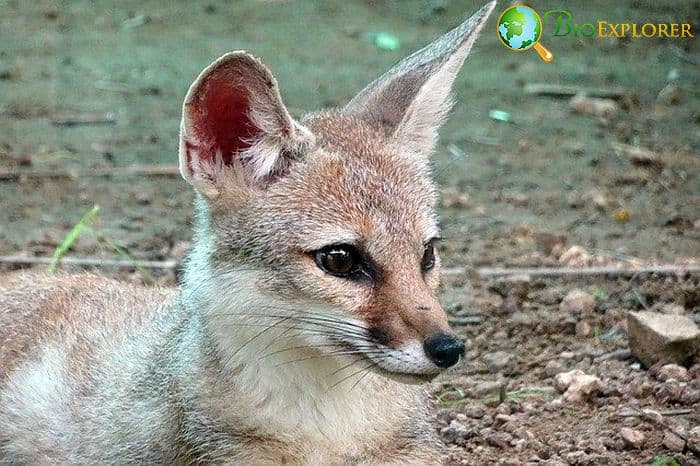
| Animalia | Carnivora | Canidae | Vulpes | Vulpes bengalensis |
- The Bengal fox has been documented to feed on various food items, constituting Arthropods of the classes Coleoptera (beetles) and Orthoptera (crickets, locusts, and grasshoppers).
- This type of fox also feeds on termites, rodents, spiny-tailed lizards, and Ziziphus fruits.
- The Bengal fox is a generalist feeder, an attribute that has contributed to its ability to survive in India’s vast range of habitats.
- Indian foxes stalk their live prey before hunting them.
- Their acute sense of hearing comes in handy to help in their hunting quests.
In other cases, especially during winter, the Indian foxes dig out reptiles like the spiny-tailed lizards from their burrows and feed on them.
![]()
What Do Red Foxes eat?
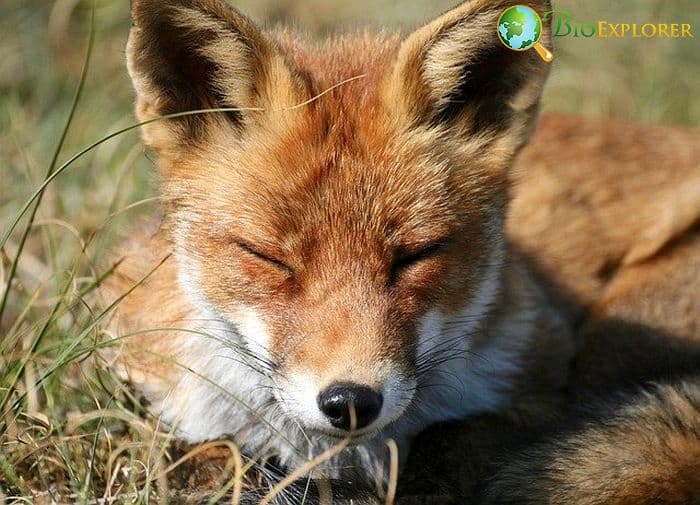
Another well-known fox species is the red fox. The red fox lives in many habitats, including deserts, mountains, forests, and grasslands.
| Animalia | Carnivora | Canidae | Vulpes | Vulpes vulpes |
- The red fox inhabits large communities, farms, or suburban areas.
- Red foxes are essentially omnivores, consuming both a meat and plant diet.
- Some products preferred as food by the red foxes include rabbits, rodents, birds, insects, and fruits.
- Like other types of foxes, red foxes use magnetic fields to launch an attack on their prey.
- Czech researchers identified that foxes tend to position their direction in line with the earth’s magnetic field to determine their prey’s distance.
- These mammals then jump in a northeastern direction to surprise their target by pouncing on it, in a technique described as mousing.
- Additionally, the red fox’s keen sense of smell and hearing comes in handy to help it find its prey and dig it from its burrows before consuming it.
![]()
What do Blandford’s Foxes?
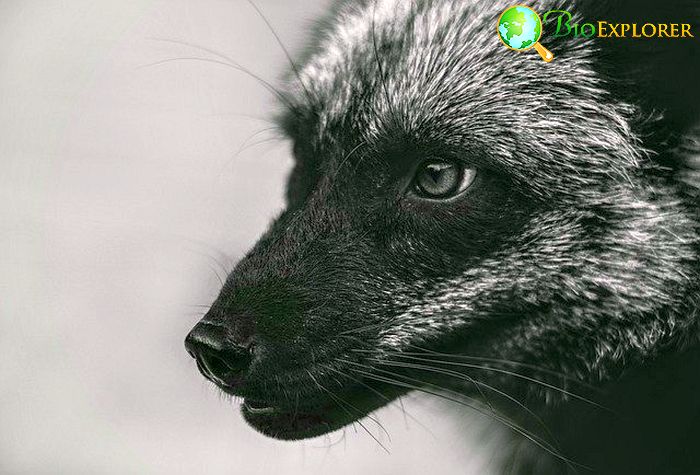
The Blandford’s fox is a rare fox species. This fox species thrives in rocky habitats, mainly mountainous cliffs, caves, and crevices.
| Animalia | Carnivora | Canidae | Vulpes | Vulpes cana |
- Blandford’s foxes are practically omnivorous.
- They are mostly inclined to feed on insects and fruits.
- The most common types of insects preferred are the coleopterans, wasps, ants, isopterans, and orthopterans.
The hunting strategy used by the Blandford’s foxes to catch their insects’ prey is stalking.
![]()
What do Fennec Foxes eat?

The fennec fox is considered the smallest canid, growing to lengths between 14-16 inches long and additional tails of anything between 6 and 12 inches. These canids also weigh between 2-3 pounds.
| Animalia | Carnivora | Canidae | Vulpes | Vulpes zerda |
- The fennec fox is notable for its characteristic ears that are long and can grow to between 4 and 6 inches.
- The fennec fox is well-adapted to thrive in desert habitats, which are exclusively sandy and arid.
- This highly social animal is omnivorous, feeding on both plant and animal matter.
- The fennec fox mostly prefers insects, particularly locusts and grasshoppers.
- Other organisms that the fennec fox also consumes include rodents, lizards, small birds, and their eggs.
- The plant matter that the fennec fox consumes entails roots, fruits, and leaves, which come in handy to hydrate them.
- The fennec fox’s enormous ears are pertinent to hunting.
- These ears help them to capture vibrations from their prey beneath the sand. Once they locate the sound vibrations, they dig the location to expose their target before consuming it.
![]()
What do Swift Foxes eat?
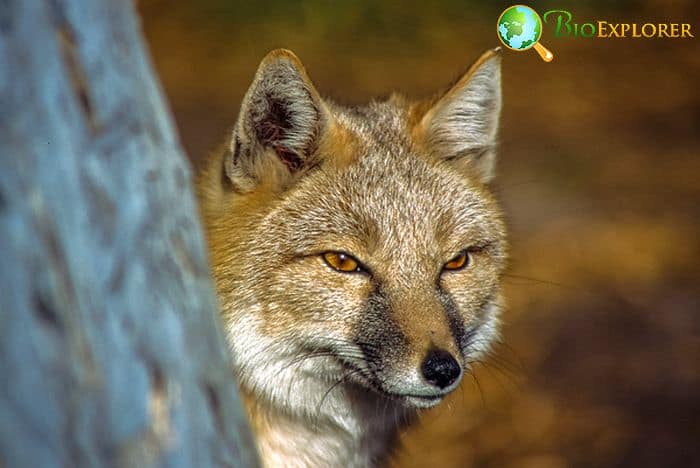
The swift fox is endemic to the North American region, and its preferred habitat is the prairies. The swift fox is tiny, weighing anything between 4-6 pounds.
| Animalia | Carnivora | Canidae | Vulpes | Vulpes velox |
- Its name was coined by the western settlers who observed them as speedy and highly agile. The swift fox is omnivorous, with its diet entailing both plants and animals.
- Some specific food products the swift fox consumed included: insects (such as grasshoppers), small mammals such as squirrels and rats, and vegetation.
- This canid also feeds on rabbits, birds, small reptiles, and birds’ eggs.
- To catch their prey, swift foxes stalk them.
Their sense of scent also helps locate their prey, while their high speed helps aid in the hunting process.
![]()
What do Kit Foxes eat?
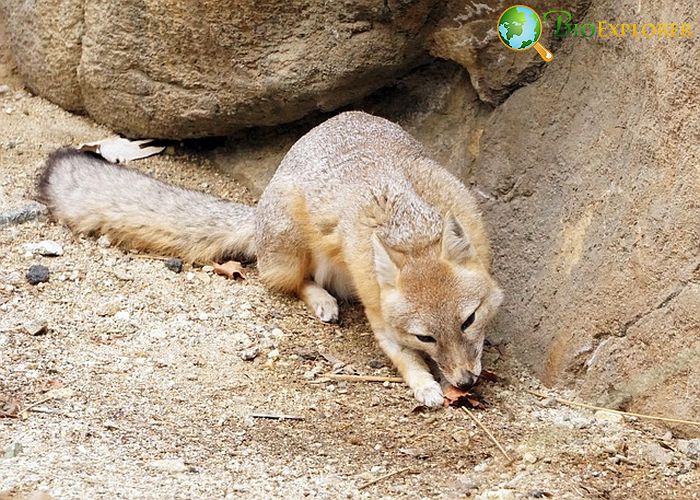
Kit foxes are adapted to live in hot and harsh desert habitats. They can also be found in scrubland, grassland, and wetland regions. Kit foxes can today be found residing in agricultural or urban areas.
| Animalia | Carnivora | Canidae | Vulpes | Vulpes macrotis |
- The kit fox is omnivorous, whose diet entails mainly rabbits and rodents.
- This fox species feeds on kangaroo rats, prairie dogs, cottontail rabbits, black-tailed jackrabbits, ground-dwelling birds, insects, snakes, and lizards.
- In food scarcity, the kit foxes consume vegetation with the examples of cactus fruits and tomatoes.
- The kit fox’s body has been well adapted to help them thrive.
- For example, its large ears come in handy to provide adequate hearing, perfect for locating prey. Their short legs help them quickly ambush to capture prey.
- When hunting, kit foxes use the stalking method to find their prey.
They then dig their potential targets from their hideouts before proceeding to grab and eat them.
![]()
What do Tibetan Foxes eat?
The Tibetan foxes are known for their square-shaped faces and triangular ears.
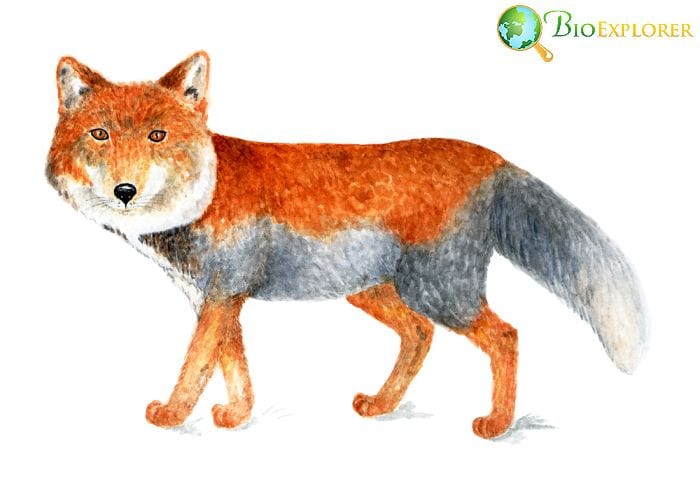
| Animalia | Carnivora | Canidae | Vulpes | Vulpes ferrilata |
- As suggested by its name, the Tibetan fox is in wide distribution in the Tibetan plateau. The Tibetan foxes can also be found north of the Himalayas in Nepal.
- The Tibetan Fox’s preferred food is the black-lipped pika, a small egg-shaped mammal that it shares its habitat with.
- The Tibetan fox also dines on other small rodents, rabbits, some ground birds, birds’ eggs, insects, lizards, and hares.
- Tibetan foxes are considered skilled hunters because of their perfect hearing senses. Their well-developed hearing comes in handy to help them locate their prey before pouncing on them or digging them from their hiding places.
![]()
What do Cape Foxes eat?
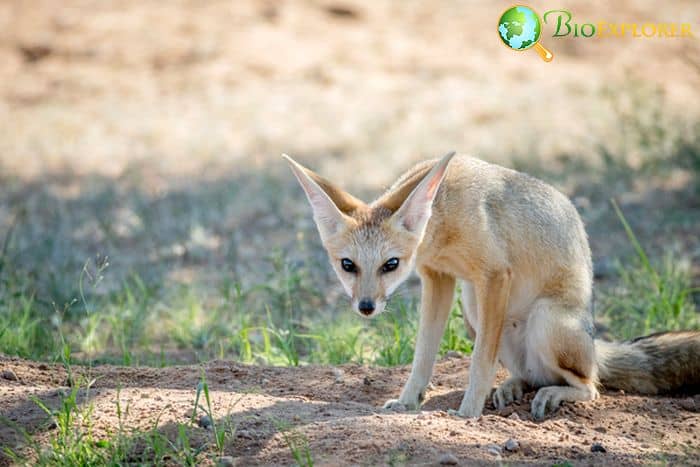
The Cape fox is native to the southern Africa region. The Cape fox is called the cama fox, asse, or the silver-backed fox. The Cape fox is one of the smallest canids and least studied foxes.
| Animalia | Carnivora | Canidae | Vulpes | Vulpes chama |
- The Cape fox’s diet entails rodents (particularly the gerbil mouse and pygmy mouse), arthropods (beetles, termites, and scorpions), rabbits, and small reptiles, and will occasionally consume wild fruits.
- The Cape fox’s excellent hearing helps its hunting process. This fox can locate and dig up its prey from its hideaway through its great hearing.
![]()
What do Arctic Foxes eat?
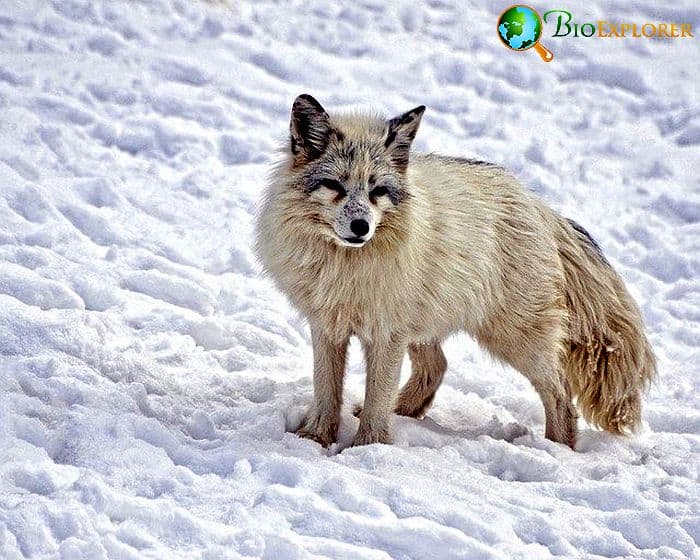
The Arctic fox is also called the snow fox, white fox, or polar fox. This fox is endemic to the Arctic regions of the Northern Hemisphere.
- The Arctic fox is well-suited to live in cold areas, thanks to its thick coat of fur and a layer of fat under its skin.
- The Arctic fox’s leading food is the lemming, a short-tailed rodent found in wide distribution in the Arctic tundra region.
- The Arctic fox’s palate includes sea birds, fish, and other marine life.
- This fox’s wide ears come in handy to help their hunting. The Arctic fox can pick up its potential prey’s vibrations tucked under the snow using its strong hearing senses.
- Once sure about their prey’s location, the Arctic foxes pounce on their prey, attacking them from the top.
In the cold, harsh winters, the Arctic fox tends to significantly reduce its activity, which helps them store its body fat.
![]()
When do Foxes eat?

Foxes are primarily nocturnal, meaning they come out at night to feed and retire to rest during the daylight hours. Foxes also tend to crepuscularity, meaning they come out to eat at dusk or dawn.
![]()
How often do Foxes eat?

Because of their incredible sense of hearing, foxes will attack prey as often as they locate one and as long as they are hungry. These canids will eat as long as the food is readily available and consume anything between the amount of 0.5 and 1 kilogram of food every day.
![]()
What eats Foxes?
![]()
Do Foxes predate Humans?
No. Foxes have a natural fear of humans. If they are seen outside, they will often run away upon discovering they have been detected, except in a few rare cases like below:
![]()
Do Foxes Eat Snakes?
With an omnivorous diet, foxes eat snakes when possible, but they are not the primary food source. In addition, foxes have an acute sense of smell to detect if the snake is poisonous. Therefore, they would avoid eating poisonous snakes. Although most fox species eat snakes, the Kitfox (Vulpes macrotis) has been observed to dine on snakes in the wild.
Do Red Foxes Eat Grasshoppers?
Red foxes feed on various food sources, including insects, small animals, and reptiles. In the insect’s category, red foxes do eat grasshoppers. Example foxes include the Bengal fox (Vulpes bengalensis), Fennec Fox (Vulpes zerda), and Swift Fox (Vulpes velox).
Do Foxes Eat Birds?
Of course, they do. Foxes target ground-dwelling birds such as Chickens, Cassowaries, Emu chicks, Ostriches, Rheas, Burrowing owls, roadrunners, and common ground doves. In the wild, many fox species dine on birds from these orders – Passerines, Columbiformes, Galliformes, Larids, and Charadriiformes.
Do Foxes Eat Prairie Dogs?
Prairie dogs are considered one of the primary food sources for foxes in the wild. An example includes the Kit Fox (Vulpes macrotis).
Do Foxes Eat Frogs?
Foxes consume frogs, but it is one of the less common food items.
What role do Foxes play in the Animal Food Chain?
Foxes play a fundamental role in the animal food chain.
- These canids feed on a vast range of small organisms such as arthropods (termites, locusts, and grasshoppers), small reptiles (spiny-tailed lizards, saw-scaled vipers, red sand boa, common sand boa, and the short-tailed agamids), and small mammals, thus helping in controlling their local populations.
- In their role as prey, both young and adults, foxes are predated on by organisms like coyotes and large birds of prey such as eagles and hawks, thus providing a great source of nutrients to these organisms.
![]()
Frequently Asked Questions
What is the primary diet of a fox?
Do foxes eat fruits and vegetables?
Are foxes carnivores, herbivores, or omnivores?
What is the favorite food of foxes in the wild?
Do foxes hunt for their food or are they scavengers?
What kind of animals do foxes prey upon?
Can foxes eat human food? If so, what types?
How does the diet of a fox change with the seasons?
What kind of food should I feed a pet fox?
Are there any harmful or toxic foods to foxes?
How does a fox’s diet vary by species and geographical location?
Do foxes require a specific diet for their health and well-being?
How do foxes find their food?
What role does diet play in the lifespan of a fox?
How does the diet of a fox affect its behavior and lifestyle?
Can foxes eat dog or cat food?
What is the impact of a fox’s diet on the ecosystem?
How do foxes adapt their diet in urban environments?
What are the feeding habits of baby foxes compared to adults?
In general, the presence of foxes is an indication of the existence of a thriving ecosystem.
![]()


